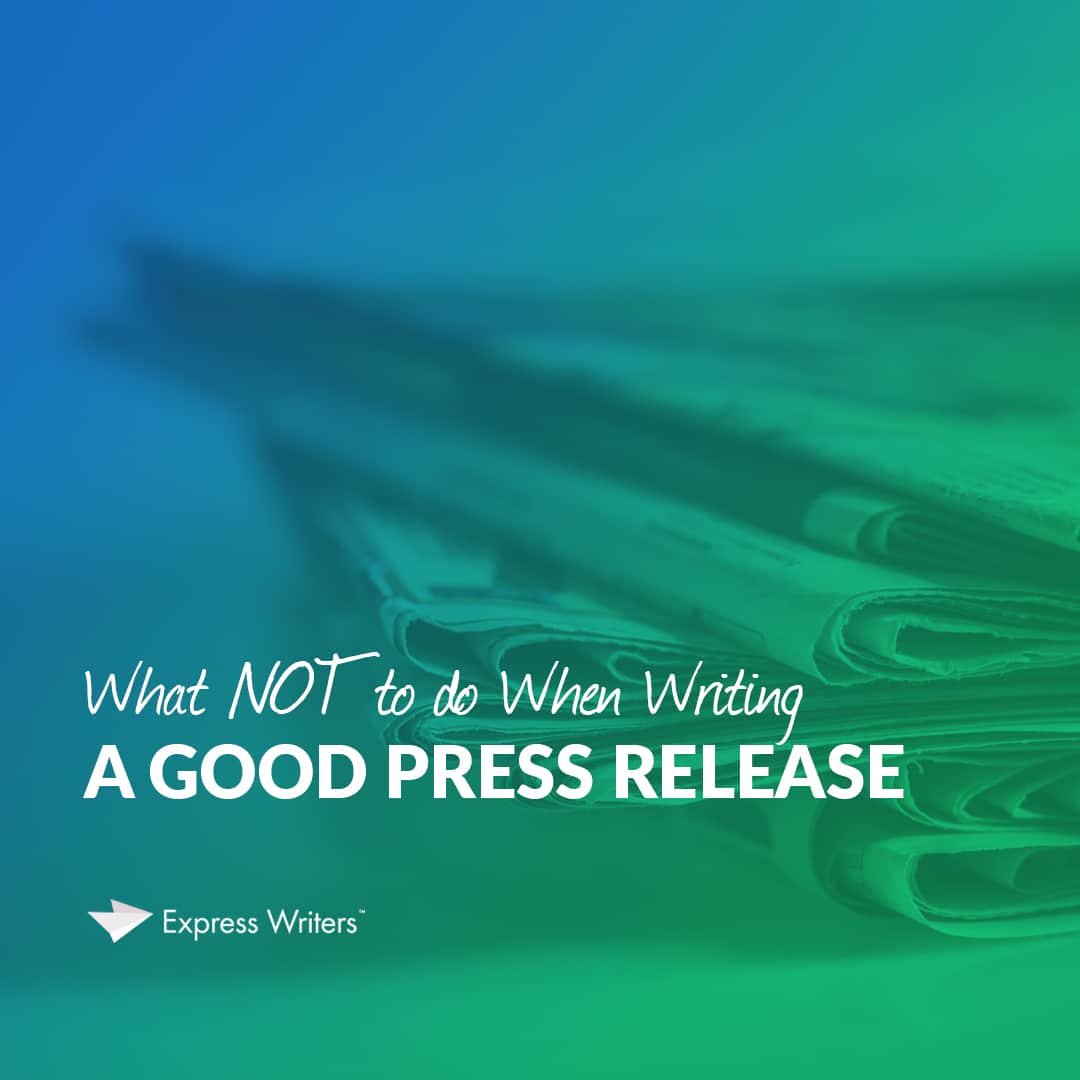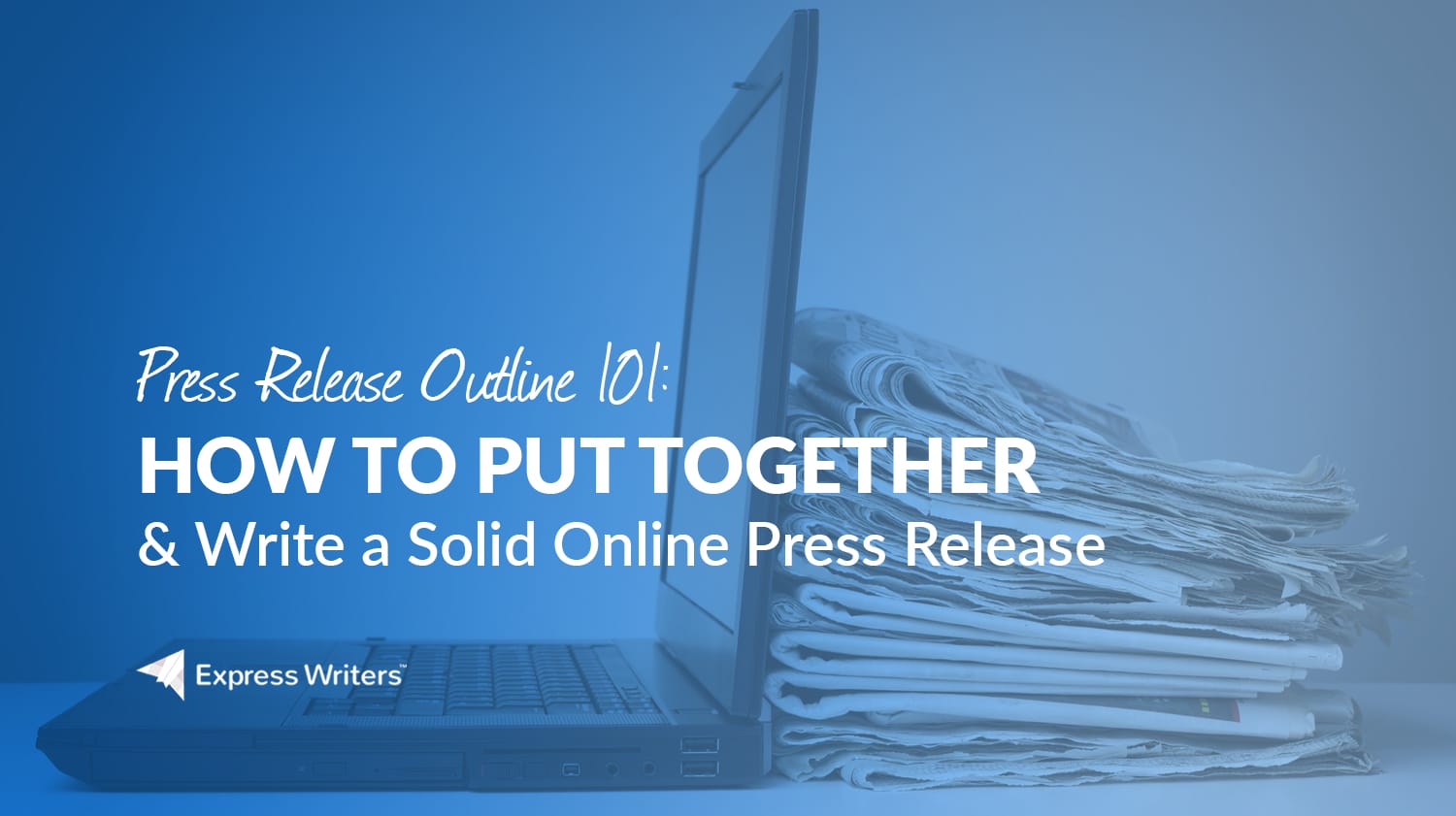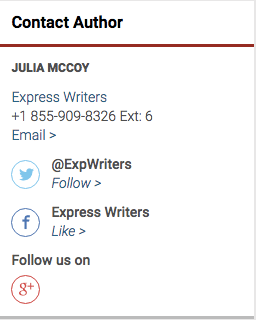
What NOT to Do When Writing a Good Press Release
You just opened your writer’s desk at Express Writers to find a new assign- what? They gave you a PRESS RELEASE? It’s been, well, it’s been a long time since you wrote your last press release – and the last one felt like pulling teeth.
You’re still painfully aware of that little fact, and you’re nervous to try your hand at press releases again.
If you break out in a cold sweat every time someone mentions writing a good press release, you’re not alone! While press releases are critical for marketing of all shapes and sizes, they’re harder to write, for most people, than a blog or a web page. Fortunately, “difficult” isn’t the same as “impossible.”
To dominate the press release forever, all you need to do is study up on standard press release formats! Today, we’re going to provide a breakdown of what NOT to do with press releases, and give you the information you need to dominate your next press release assignment.
Going in Blind: The Worst Way to Start a Press Release
While we’ve got all the respect in the world for free-flowing writers who bend the rules of grammar and structure to their will, Kerouac would have sucked at press releases.
After all, a press release is an informative document meant to be picked up by the media. As such, it’s critical that your press releases follow a certain format and contain certain information.
Deviate from this too largely and you risk having your press release overlooked or, worse, putting out a press release that doesn’t fulfill the purposes you wanted it to.
Today, it’s critical to have a working knowledge of how press releases function. If you jump in blind and start typing until you reach your word count, your press release is going to fail.
While learning the format of a press release might seem like a scary prospect, knowledge is power, and learning the ins and outs of a PR will allow you to dominate it. Writing killer press releases is a methodical pursuit, and the best-trained and most knowledgeable people win the race.
3 Mistakes NOT to Make When Writing A Good Press Release
In the world of press releases, knowing what NOT to do is almost as critical as knowing what to do. With this in mind, avoid these three deadly mistakes in your next press release:
1. Providing Subjective Information
Press releases aren’t meant to be subjective. Unlike advertising, they don’t “sell” a company or a product. They don’t tell people how great a brand is.
Instead, press releases merely present facts that readers can rely on.
For example, if you’re publishing a press release about an upcoming event, that document needs to include details about when the event takes place, where it will be held, who is sponsoring it, and how readers can learn more about it.
The press release DOESN’T need to feature a bunch of fluff that tells people how this is the “greatest event in the world!” While the former is reliable and trustworthy, the latter is icky and will turn readers off your material.
2. Writing Poorly
You did well in your high school English classes. Heck, you even scored high enough on your ACT that you didn’t have to take the Grammar-Spelling-Punctuation test when you applied for the Communications or Journalism program at your college. You pride yourself on your command of English.
Unfortunately, that positive outlook won’t get you far when you start getting sloppy in your writing. Even the best writers sometimes fall victim to low-quality writing, and spelling and grammar mistakes. For an example of how immediately poor writing can cause people to abandon your press release, check out this primo example of a bad press release:
In addition to being embarrassing for you, spelling and grammar mistakes and poor writing can also cause journalists and readers to abandon the press release without a second look.
3. Format the Document Improperly
Press releases abide by a very specific set of formatting rules. Get them wrong, and you’ll look unprofessional and inexperienced, which is a major no-no in the world of press releases and writing for brands. Here’s what to shoot for when you format your PR:
- At The Top of the Document. The top of the document should include the company’s logo, contact information, and the words “FOR IMMEDIATE RELEASE,” or “Hold until [release date].” After that, you’ll want to include a keyword-rich headline. The headline should be written in title case, and should be short, brief, and to-the-point. For best results, use active voice in your title, and write it as if you were crafting a blog post or other click-worthy document. Your headline is just as critical as anything else, and it deserves to be treated accordingly.
- The Body of the Document. The body of the document should be populated by short, interesting paragraphs, no longer than 2-4 sentences. Include the who, what, where, when, and why of the press release topic, and consider pulling in some hyperlinks, multimedia content, and influencer quotes that provide a perspective external of the writer’s.
- Company Contact and Boilerplate Information. At the end of the document, you should include the company’s contact information (unless you plugged it in below the logo, which is fine as well), boilerplate information, which gives journalists and readers some background about the company and its main players, and a few social media links.
Once you’ve input all that information, your press release should follow this structure:
- FOR IMMEDIATE RELEASE
- Title Case Headline, less than 170 characters
- Short summary paragraph
- City, State/Country (if needed)-Month, Day, Year
- Lead paragraph with who, what, when, where, why and how; most important information here
- Press release body, short paragraphs
- Last paragraph
- Company Information
- Contact Information
- ### or “End”
7 Insider Tips for Writing a Good Press Release
While mastering the structure of the press release is critical, the battle of creating a great press release is bigger than that. Here are some pro tips to help you get it right:
1. Always Write Your Headlines Last
This is as true for blog writing as it is press releases. While you should give your release a working title, go back and write your headline last. In addition to ensuring your headline mimics the structure and format of your release, this also ensures it will contain relevant keywords and give your reader a solid idea of what they’ll learn from the press release.
2. Make Your Readers Care
One big question readers ask as they skim press releases is “who cares?” And they have a point! If you can’t answer the “who cares?” question, your press release is going to flop, and that’s bad for everyone. Be sure you understand the target audience of your press release and that you’re setting yourself up to communicate with them accordingly. The more you can make your audience care, the better.
3. Use Data
Data inspires trust, and trust is essential for a good press release. To make the PR more credible, include relevant data that can help back up your claims or lend weight to your announcement. Not only will this capture the attention of readers, it will also give journalists something to quote and share from your press release.
4. Write in Active Voice
Active voice is strong, forceful, and deliberate. Use it throughout the press release to communicate confidence and conviction to your readers and inspire trust in the company and the topic at hand.
5. Get Right to the Point
Beat around the bush – lose readers. Get to the point – gain attention. When it comes to writing a good press release, it’s really that simple. Since press releases are educational documents, they’re meant to provide immediate value and understanding. If they don’t, people will leave.
6. Make it Flawless
The more flawless your press release can be, the better. Before you submit it, go back through the document and check for spelling and grammar errors and any flow or understanding issues. These things will sink your release faster than a lead balloon, so it’s critical to resolve them now.
7. Include Relevant Contact Information
Instead of giving readers every bit of contact information a company has, include only the most relevant channels. Email, phone, and social media links are ideal, although the “right” contact information will vary from brand to brand.
Writing a Good Press Release the Easy Way
While writing a good press release can feel impossible, abiding by these simple guidelines can help make it a reality.
If you need professional help to write your upcoming press release, contact Express Writers to learn more about our specialty PR team and how they can help your brand succeed.









